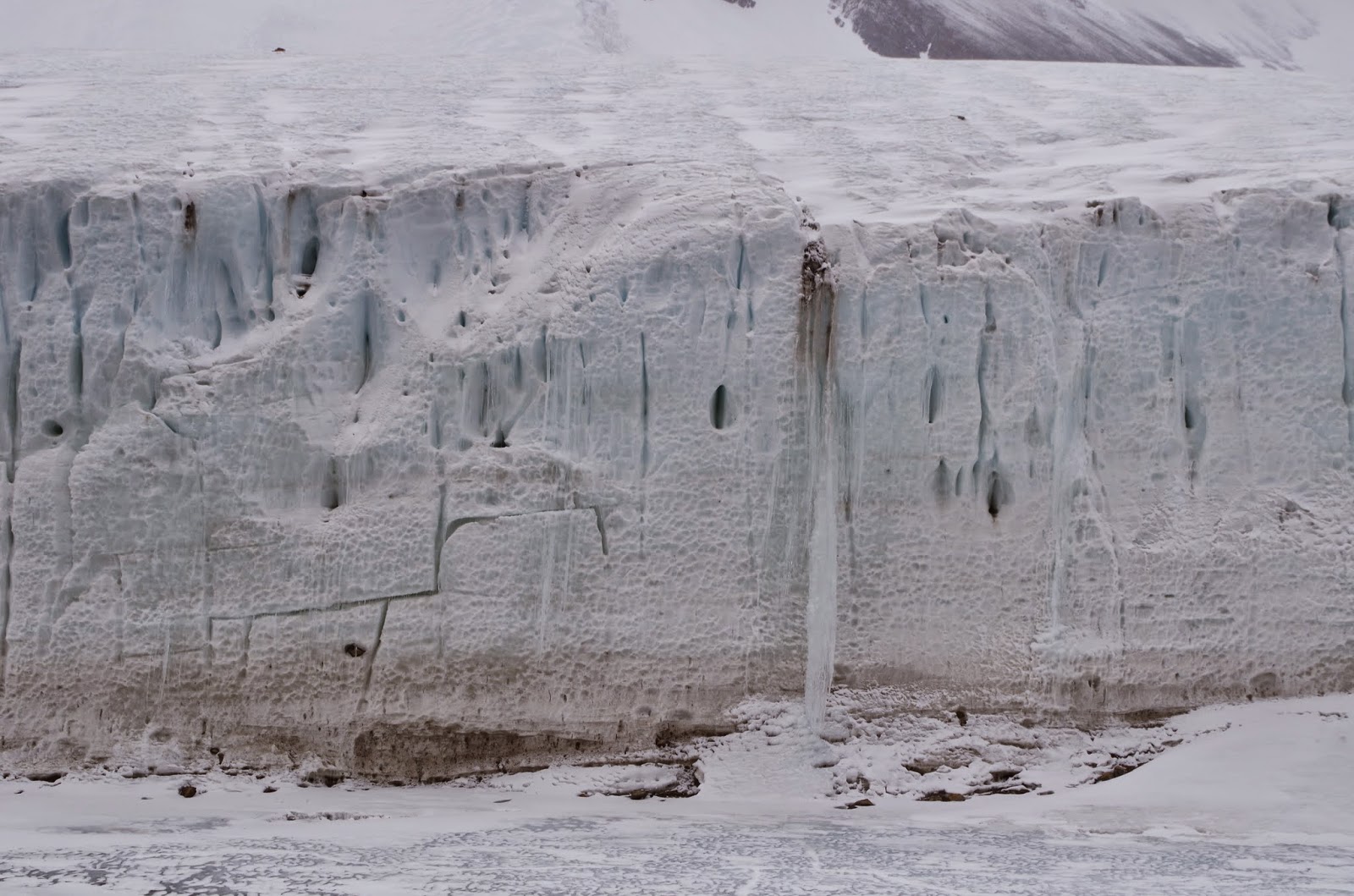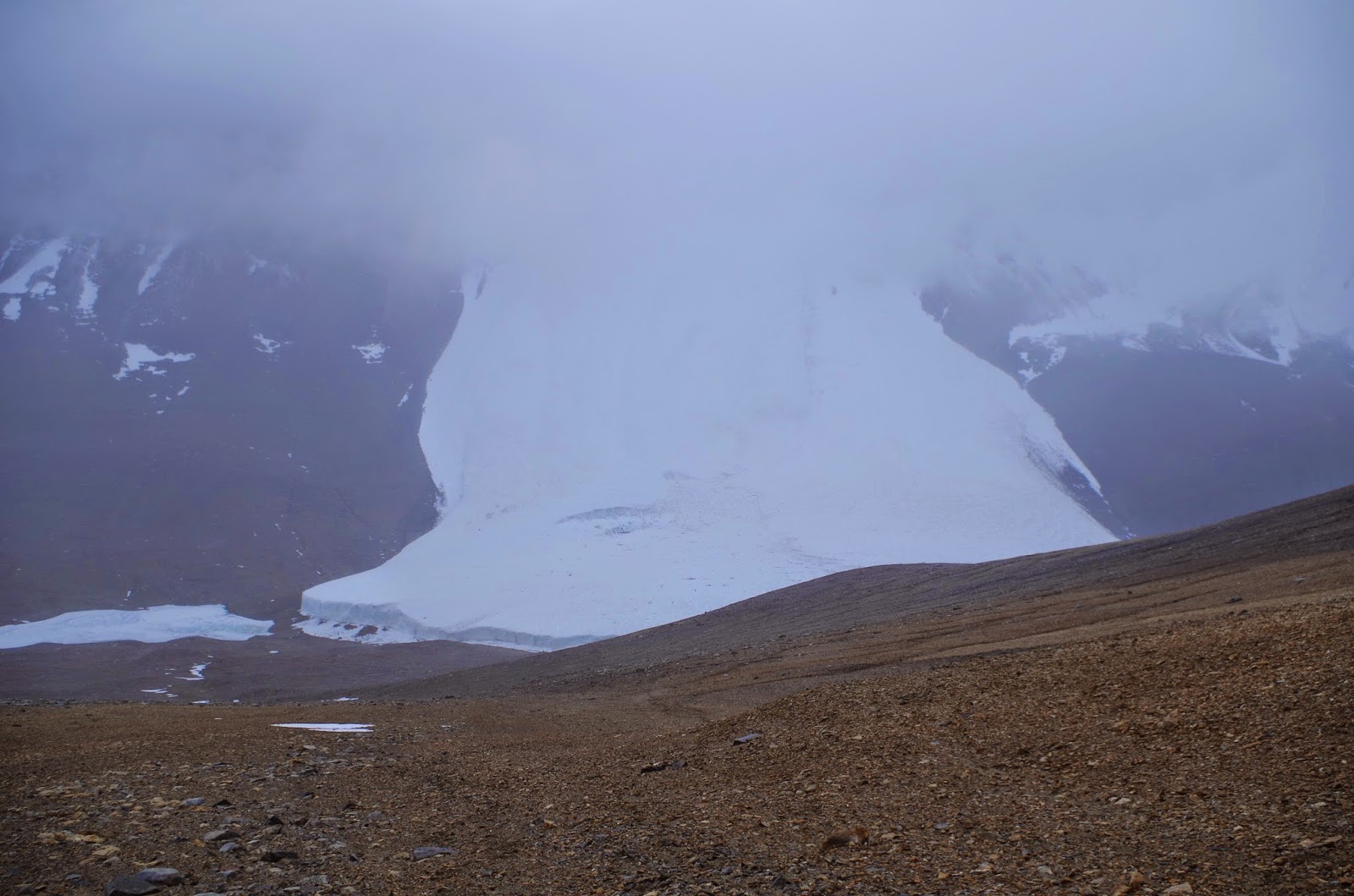 |
| Picture 1: Uneven ice surface on Lake Chad. |
Venitfact - any stone
shaped by the abrasion on windblown sand (Webster’s Dictionary)
After a long work week at Lake Hoare it was time for a little
fun. I decided to go on a six hour hike that would take me down the shoreline
of Lake Hoare and its western counterpart Lake Chad, around Suess Glacier, and then
finally up a steep slope to a ridge in order to see some unique geological
features called ventifacts.
Hiking in the Dry Valleys isn’t as easy as it is back in the
states. Surfaces are often uneven and comprised of material called till, which
is loose rocks and sediment left behind on the surface after periods of
glaciation. Walking on this material definitely slows down your travel time and
can wear out your legs if you’re not mindful to take regular stops. However, the
views are definitely worth it once you get going.
 |
| Picture 2: View of Lake Chad from the west. |
As I made my way down Lake Hoare and Lake Chad, it was neat
to observe the ice features on the surface of the lakes (Pictures 1 &2). Preferential melting, wind erosion of ice,
and movement of the underlying lake water all contribute to these unique
patterns on its surface.
 |
| Picture 3 Scalloped features in the glacier ice. |
Next up on the journey was Suess Glacier. I needed to walk
around the glacier to get to my final destination and I found a nice path
between the glacier itself and its terminal moraine (A terminal moraine is a
mound of till that is pushed up in advance of a glacier as it moves across the
landscape). It was impressive to be so
close to the edge of the glacier and observe features such as frozen waterfalls,
scalloped patterns in the ice, and melt water streams (Pictures 3 &4). I was also impressed
with its overall size as in some locations the ice face was the height of a
five-story building!
After rounding the front of glacier, I made my way up a
steep hill which provided some great views of Seuss Glacier (Picture 5). It was nice to
stop and take in the vastness of the landscape and the sounds of the wind. It
was definitely the most isolated I’ve ever felt from human contact, which was
also good motivation to keep moving.
 |
| Picture 4: View of an ice waterfall located along the front face of Suess Glacier. |
Upon summiting the ridge, I was greeted by one of many
ventifacts (Pictures 6-9). The ventifacts consist of boulders that are frequently subjected to
high winds. These winds routinely pick up sand grains which scour the exterior
of the rock. In some cases this erosion can leave behind smooth polished surfaces
while in other cases there appears to be arms extending from the boulder
itself. The wind was really gusting
along the ridge and it was snowing so I didn't stick around too long after
taking some pictures.
 |
| Picture 5: View of Suess Glacier from the opposing ridge. |
The return trip allowed me to take in the same sights form a
new direction. I frequently found myself
looking at the edge of the lakes which had melted for signs of fish or other forms
of aquatic life. It’s an eerie feeling to be an environment almost completely
devoid of life forms you can see with the naked eye. It was at this time I was
greeted by Taylor, the resident skua (an Antarctic bird) of the valley. It was
nice to have this welcome back to camp.
 |
| Picture 6: View of a ventifact. |
 |
Picture 7: View of a ventifact.
|
 |
Picture 8: View of a ventifact.
|
 |
| Picture 9: Rock broken apart by freeze thaw action. |